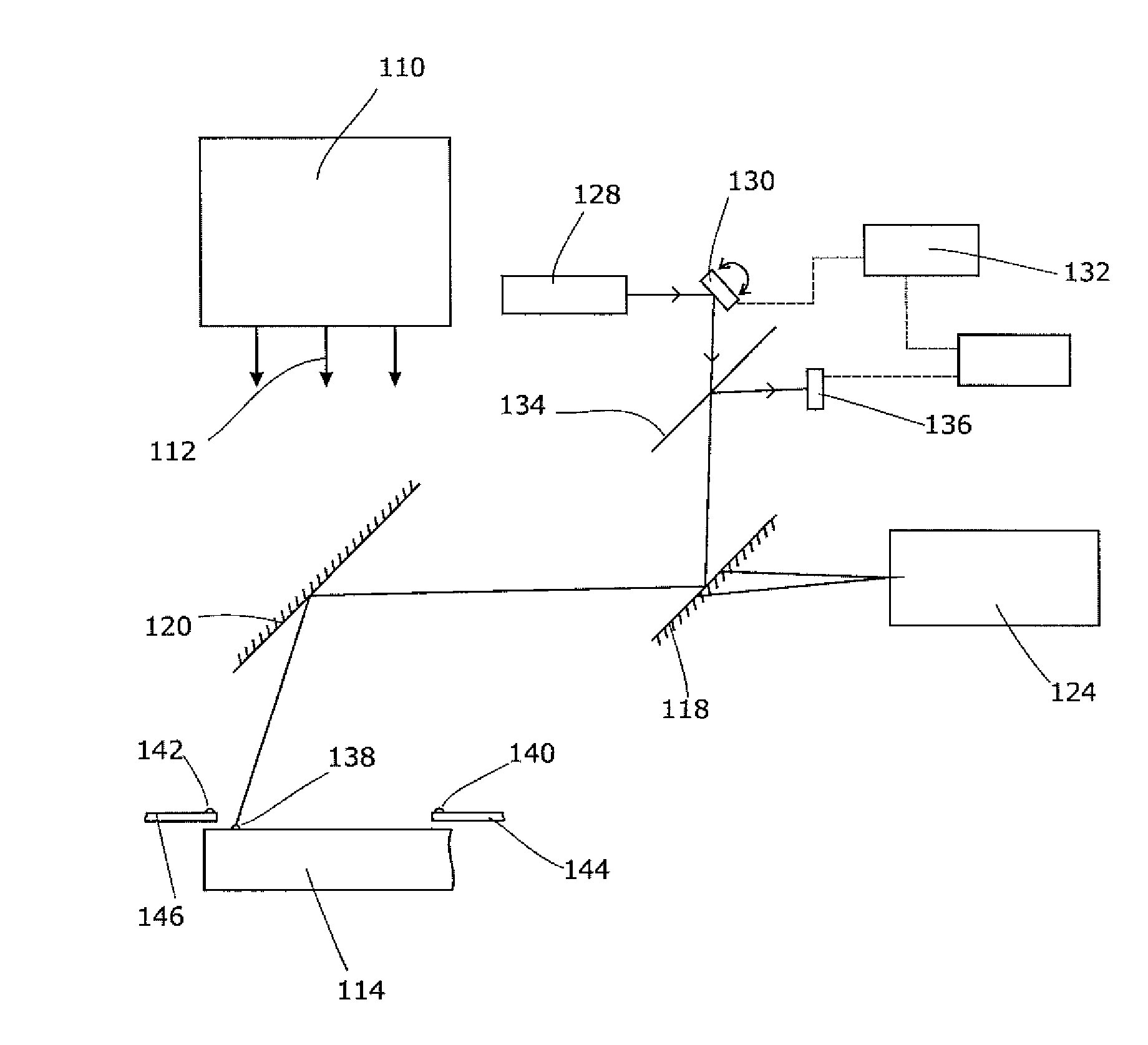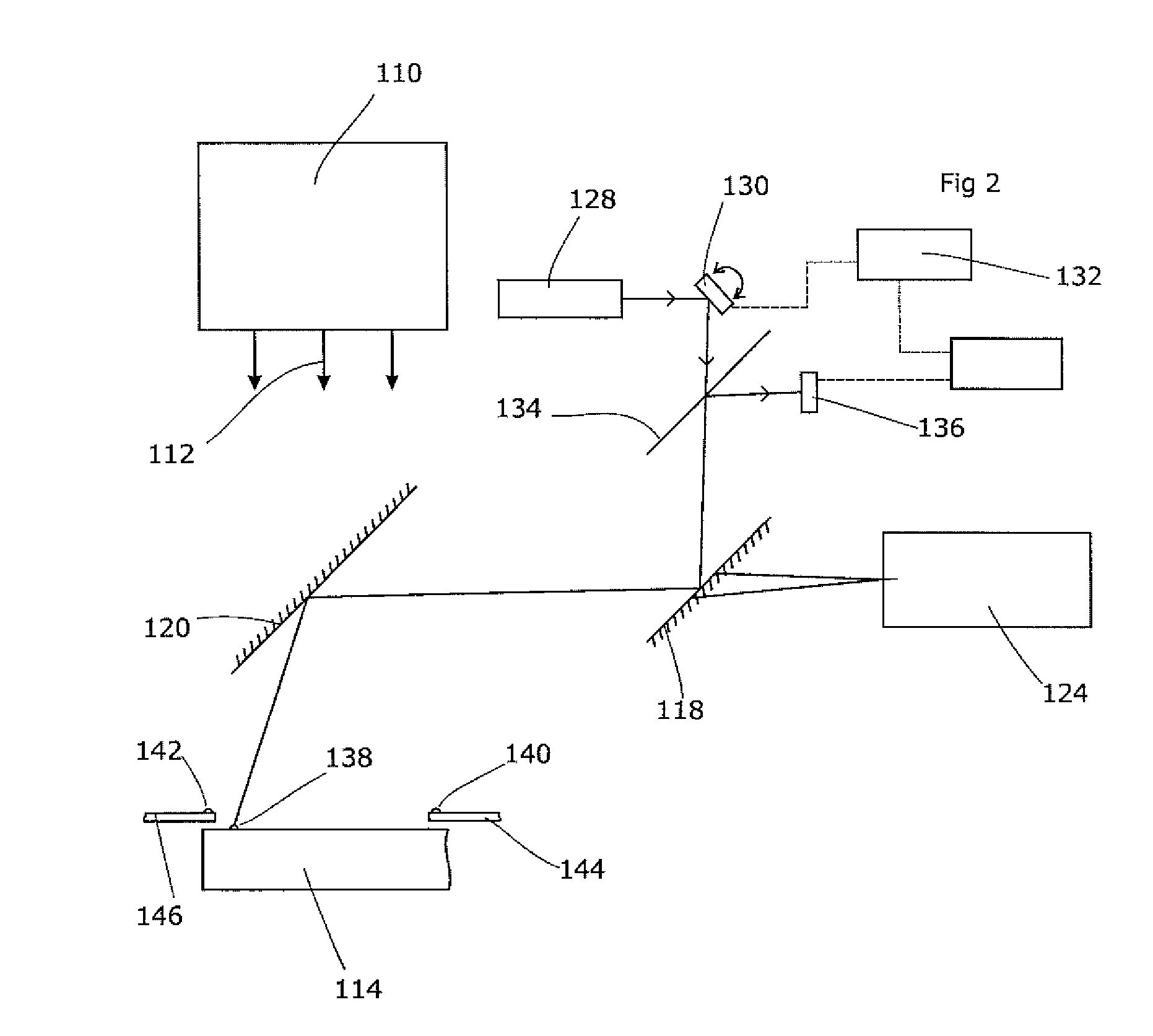Position detection
a technology of position detection and detection mode, applied in the field of position detection, can solve the problems of inability to easily increase, limited accuracy and resolution, and the most sensitive to radiation of electronics, and achieve the effect of fast and accurate control of the mirror position
- Summary
- Abstract
- Description
- Claims
- Application Information
AI Technical Summary
Benefits of technology
Problems solved by technology
Method used
Image
Examples
Embodiment Construction
[0027]The following embodiment of the present invention is a position-detection system for the leaves of a multi-leaf collimator. This faces significant difficulties as set out above, which are alleviated by the present invention. However, the invention is also applicable in other contexts.
[0028]FIG. 1 shows a known position tracking system for an array of MLC leaves. A radiation source 10 emits a beam of radiation 12 towards a treatment volume, illustrated (by convention) as being in a downward direction. In practice, the source is usually rotated around the treatment volume so as to irradiate the region of interest from a range of different angles, thereby reducing the irradiation of surrounding tissue.
[0029]The shape of the radiation beam 12 is collimated by an MLC comprising an array of individual leaves 14. These are deep in the beam direction, elongate, and narrow in width. They are arranged side-by-side, and are individually moveable back and forth, into and out of the beam. ...
PUM
 Login to View More
Login to View More Abstract
Description
Claims
Application Information
 Login to View More
Login to View More - R&D
- Intellectual Property
- Life Sciences
- Materials
- Tech Scout
- Unparalleled Data Quality
- Higher Quality Content
- 60% Fewer Hallucinations
Browse by: Latest US Patents, China's latest patents, Technical Efficacy Thesaurus, Application Domain, Technology Topic, Popular Technical Reports.
© 2025 PatSnap. All rights reserved.Legal|Privacy policy|Modern Slavery Act Transparency Statement|Sitemap|About US| Contact US: help@patsnap.com



